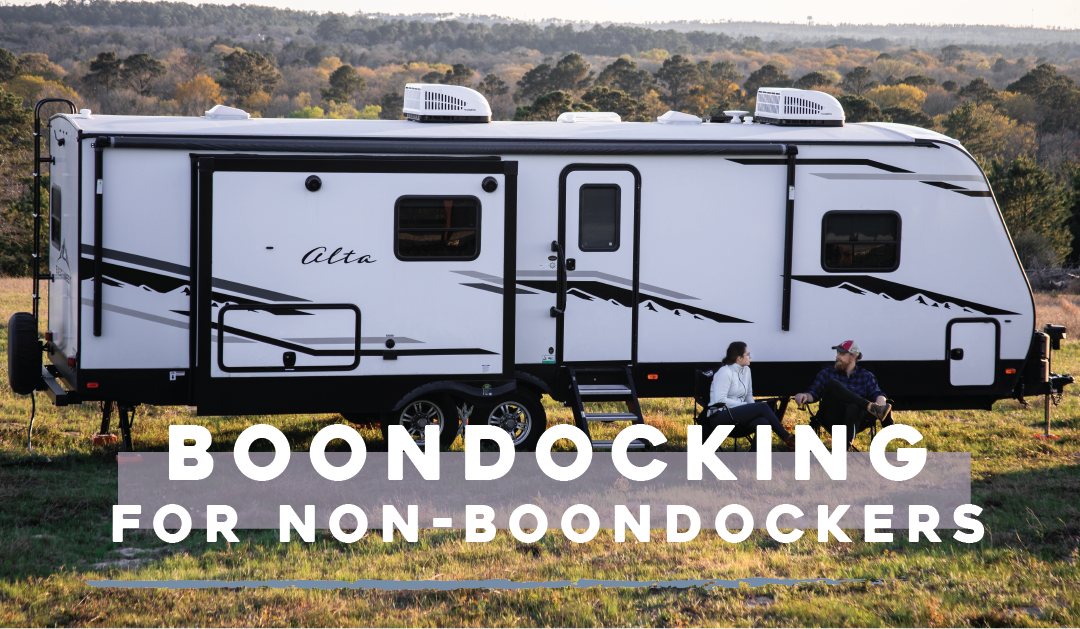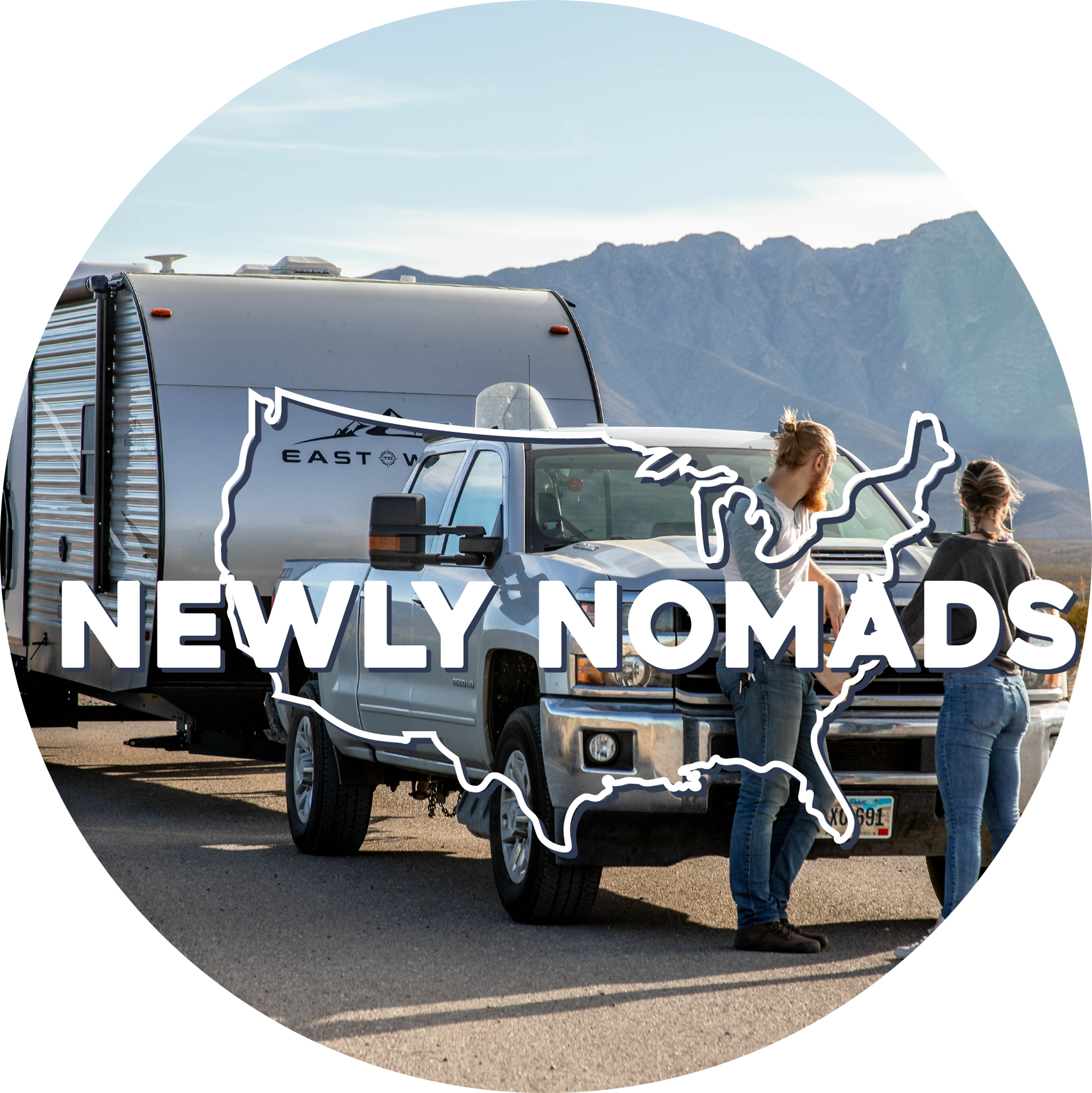Boondocking for Non-boondockers

We love boondocking, but we don’t want to make it our life. We are 100% nature hippies (especially Andrea), and we are always excited to disappear into the wilderness for a bit. BUT, modern-day digital nomads that we are, we see a lot of benefits to staying near cities (people, shopping, and the internet) and staying in RV parks (unlimited power, water, and tank dumping). To put it simply, we are non-boondockers who really love boondocking.
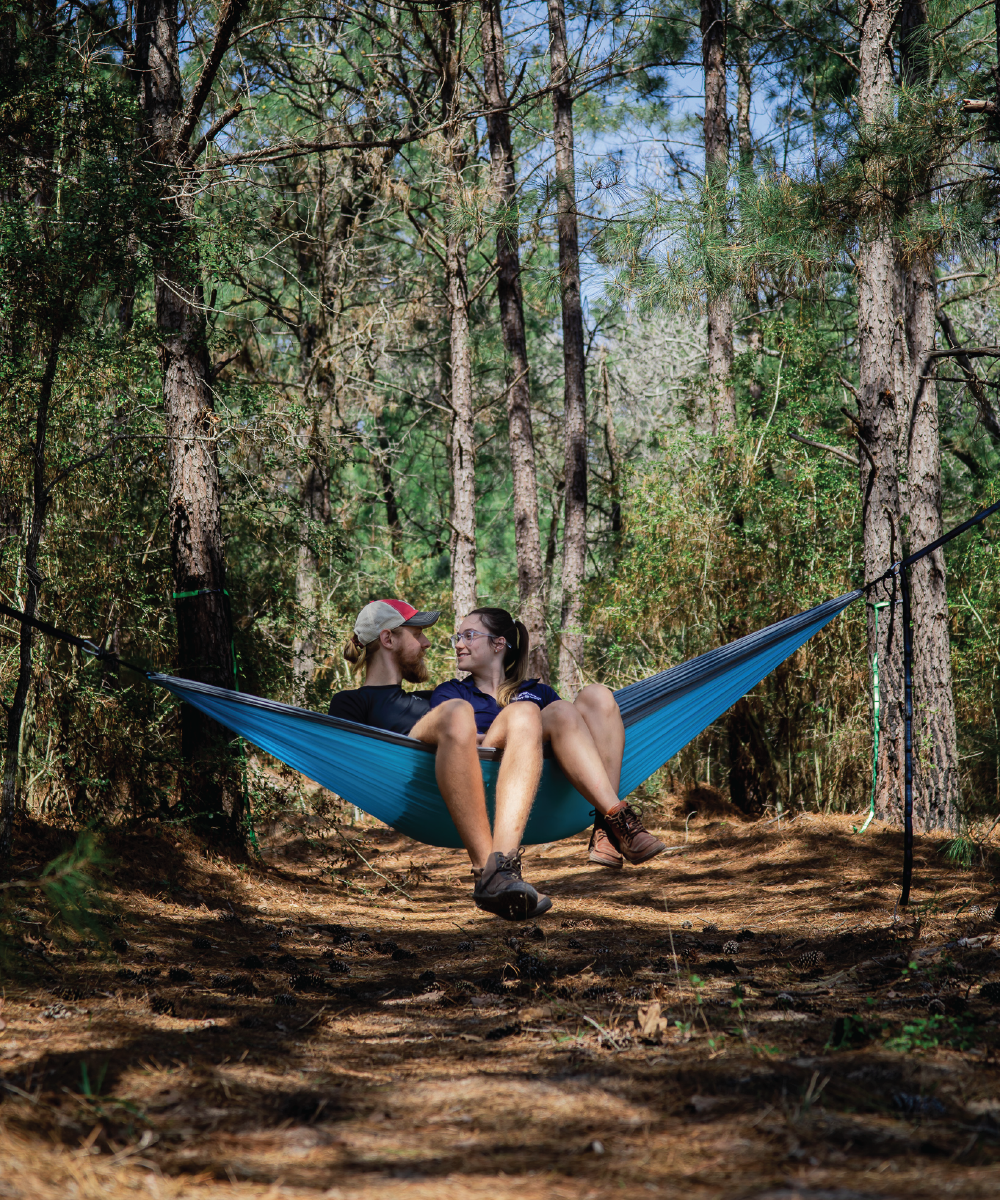
If you look at boondocking trends on Instagram and YouTube, it would seem like we are in the minority with our opinion! When we first wanted to boondock, it certainly seemed that way – every blog and article we turned to only considered boondocking as a lifestyle. They were full of mathematical equations to calculate power usage, complicated installations, and expensive equipment we would need to invest in if we wanted to live fully off-the-grid. Boondocking seemed time-consuming, super expensive, and overwhelming to say the least, and more often than once, we thought we weren’t cut out for it.
But in the Hixson household, we are hard-headed and scrappy, and we decided we wouldn’t let 4 to 5 figure price tags keep us from boondocking. So we made up our own rules and found a way to balance boondocking with our normal life, and a year ago we went on our first boondocking excursion.
Even though we appear to be in the minority, we just can’t believe that we are the only ones who find this balance of city life and wilderness so appealing! So today we are sharing how we do it.
Here are the 5 things we do to make boondocking cost-effective, simple, and perfect for getting non-boondockers like us off-the-grid!

1. Keep it Short
We keep it simple, and we go boondocking the way people would go on a camping trip: Take a weekend and go off-grid. Pack your food and camping essentials, be efficient with your water usage, try not to use power – which should be easy since you usually won’t have a cell signal anyway. With a short weekend trip, it’s highly unlikely that you will do damage to your batteries, fill up your waste tanks, or run out of water that quickly, and the extra work that comes along with camping-style boondocking can be part of the fun! We love being weekend boondockers because that is what works for our life!
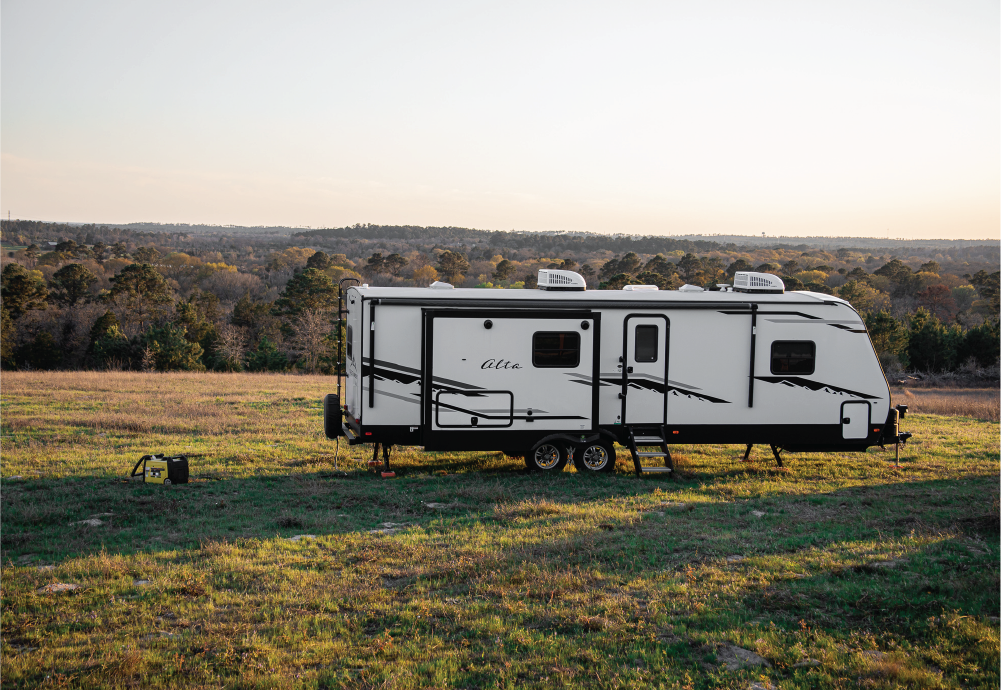
2. Stick to Mild Temperatures
Look for milder temps like later spring and early fall where the weather is moderate; not too hot and not too cold. This is essential for the non-equipped boondocker because you don’t have to worry about running the air or heat. Just open all the windows – it feels more like camping anyway!
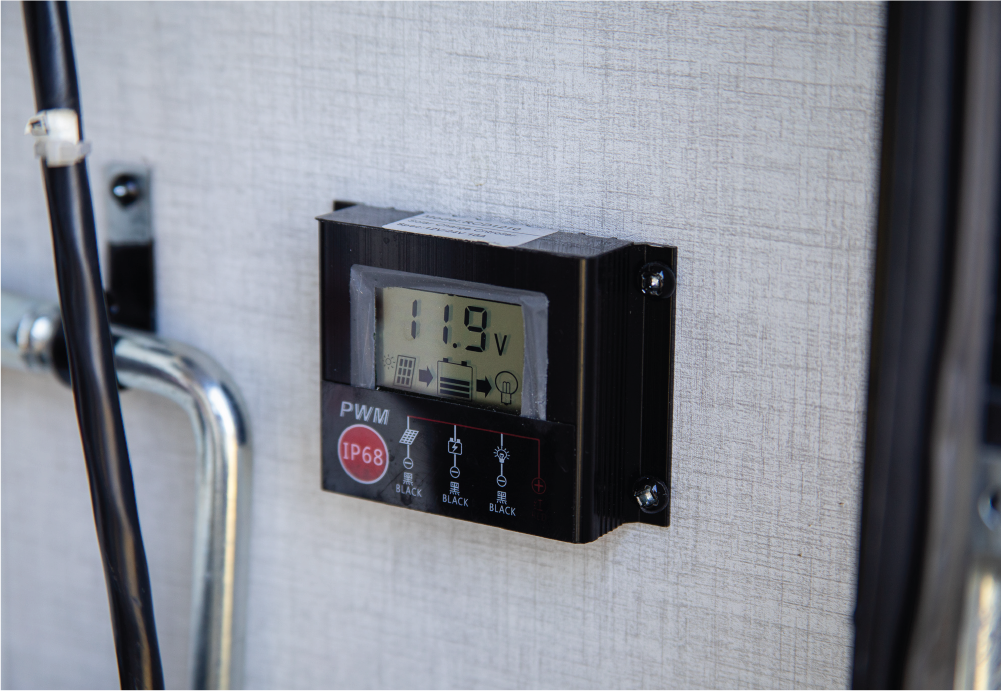
3. Invest in What You ACTUALLY Need
A positive attitude, a few good books, and some Lynx Levelers. 😉 In all seriousness, lynx levelers are the only tool that we would say is a MUST for boondocking. There are a lot of places that you will go where your RV will feel like it’s nearly sideways since you are going out onto unlevel terrain. These are the ones we use – we have 2 packs and have used all of them! In our experience, you can totally get away with boondocking for a weekend by investing only $60 on 2 packs of Lynx Levelers. Now, that’s a great Return on Investment!
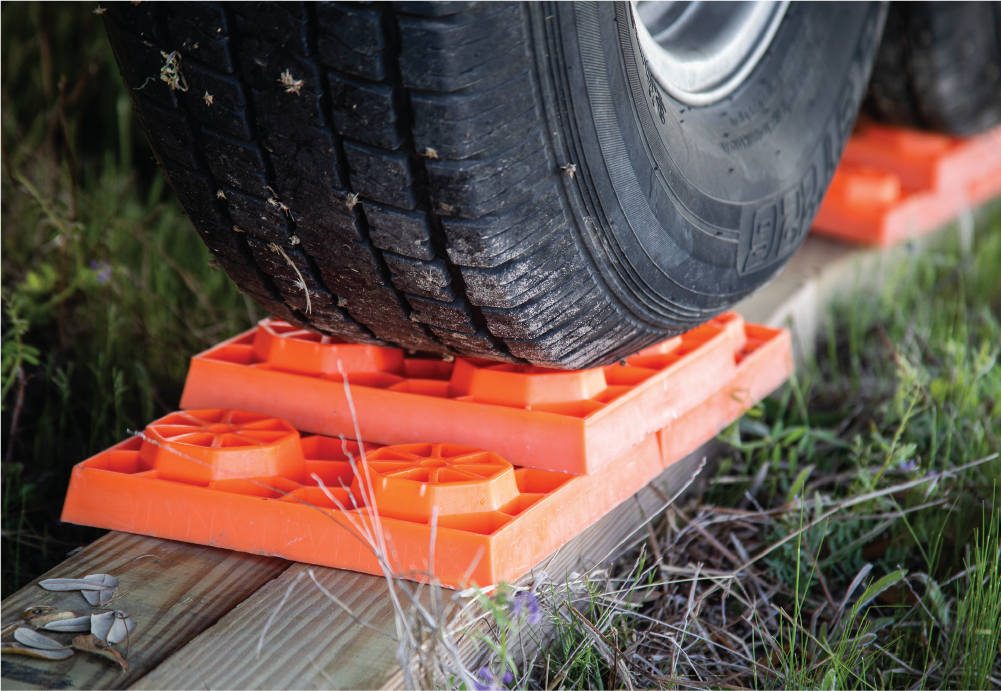
4. Have a Backup
We also like to make sure that there’s an RV park nearby (ish). Whether we just need to dump our tanks, plug into power for a surprisingly chilly night, or find that something actually is wrong with the RV, things happen on the road, and we like knowing where we can go if we need to bail (especially if we’re planning on being without cell signal).
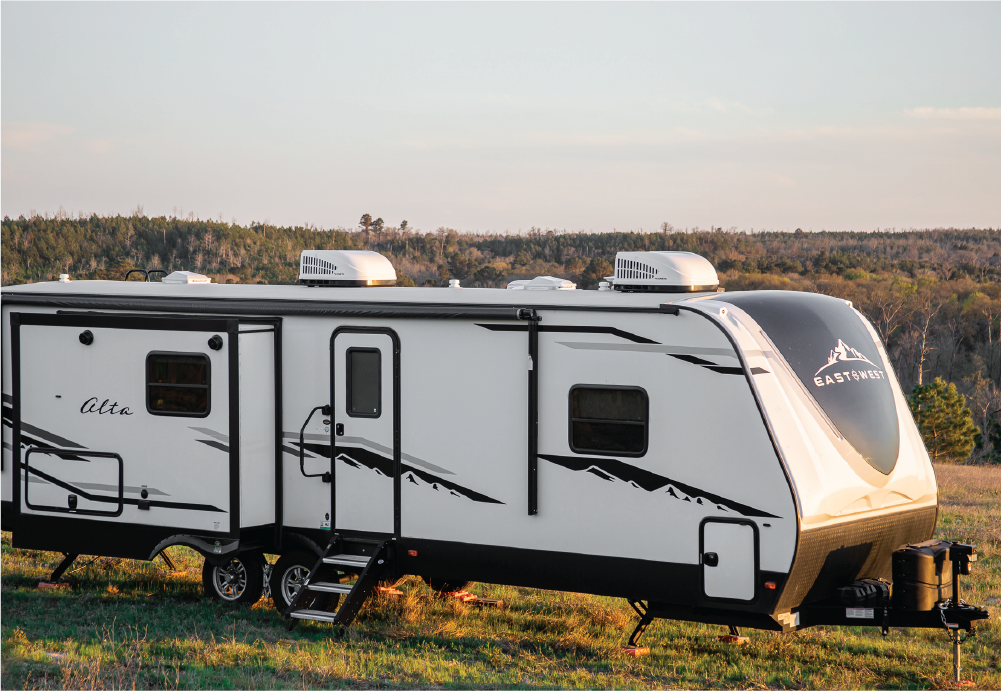
5. Run Some Tests
If you are new to boondocking and worried about pushing your rig too far, run some tests before going out into the middle of nowhere – we did our own tests before our first boondocking trip! Some good things to test are seeing how much power you can use before running your lead-acid batteries past 50% (below that and you can start to cause damage) and how much water you use in a day while practicing being efficient.
To run the test on how much water you use in a day, we love this water flow meter that shows the exact amount of water you put into your fresh tank. It’s also a good idea to poke around and really get to know your RV. For example, when we moved into our new East to West Alta, we had 2 new factors to consider in terms of power. Our residential refrigerator (so much space!) now ran on battery power instead of propane, and we also had a new roof-mounted 50-watt solar panel that came preinstalled on the RV itself (pretty cool right?), so we had to get used to how the new fridge and solar panel worked together.
Our Ideal Boondocking Trip
This is what our favorite kind of boondocking trip looks like: First, we decide where we want our next longer stay to be (for us, that’s somewhere between 2 weeks and a month). Then, we look for a boondocking spot somewhere along the way, using Campendium and Google Maps to scout. We’ll leave on a Friday, boondock Saturday and Sunday, and move on to our next spot on Monday. For example, on our first boondocking trip we were going from Tucson, AZ to Grand Junction, CO, and decided to boondock in Moab, UT for the weekend along the way.
We love this way of boondocking because it both embraces the weekend camping trip and keeps us moving on to new places, which is what we love about RV life! It also allows us to fill up with water at our RV park before we leave and dump our tanks at the RV park where we’re headed, so we don’t have to find a separate dump station or Flying J to take care of that. And we’ll always know that we can get our work done and order our Amazon packages on either side of that trip as well – it’s our perfect balance of normal life and escaping normal life!
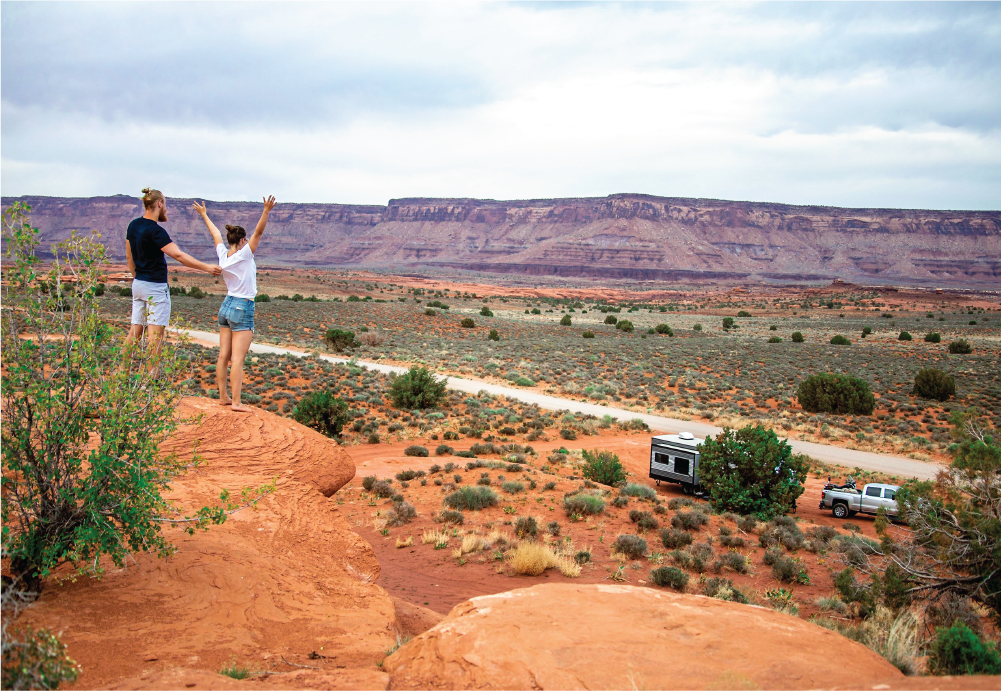
Alternate Option:
Boondock on Private Land & Borrow a Generator
There are, of course, some really amazing spots where you can boondock that no one ever gets to stay at, but that isn’t the only way to boondock. We have really enjoyed going out onto a friend or family member’s private land, borrowing a generator, and basking in the peaceful solitude. We just completed our longest boondocking trip yet by borrowing a generator!
With off-the-grid places like farms and ranches, it’s always worth asking if your friend or family member has a generator you can borrow because chances are they have probably needed one as well. Power sources like generators and solar panels are some of the most expensive and time-consuming investments into boondocking, so borrowing a generator is a great way to keep your boondocking costs low while extending your trip. Plus, most generators even have a 30 amp outlet, perfect for RVs.
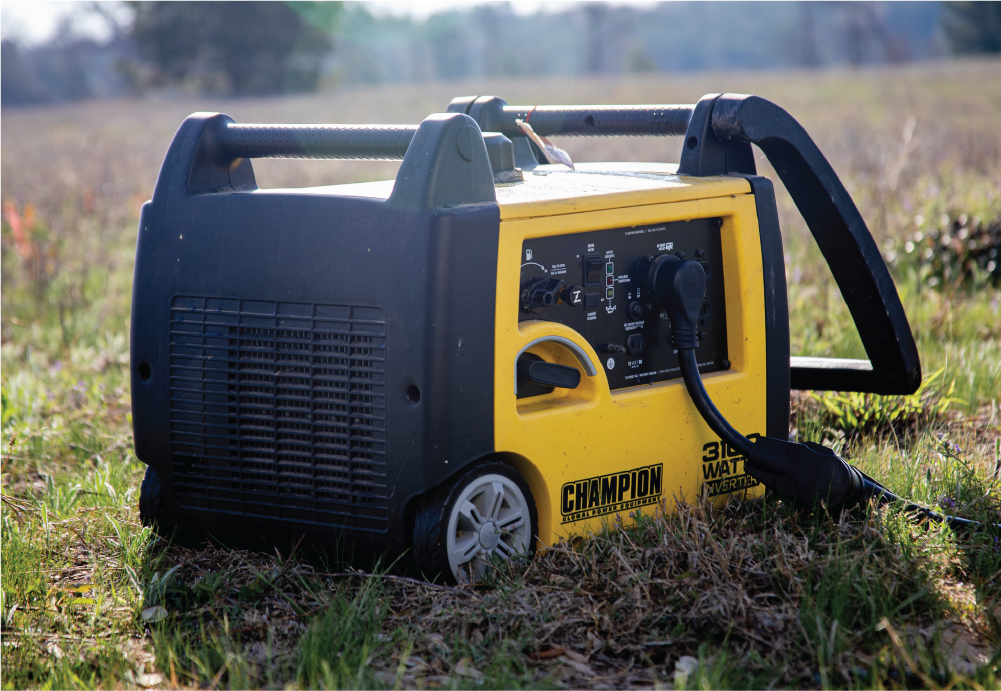
We love our boondocking, but we don’t want to spend the time and money to get ourselves outfitted to boondock full-time right now in our lives. We also know that boondocking itself takes work! There are a lot of extra things to consider when your water, power, and sewer suddenly become limited. But with our current style of balancing boondocking with staying at RV parks, we have learned to really enjoy those extra challenges on the weekends that we do decide to boondock. Plus, it’s fun to rough it sometimes and feel like we’re really camping because most of the time, our RV is ridiculously comfy ❤️
Well, that’s how we do it! We hope these tips help you break into the world of boondocking and make it all seem a little more manageable. Let us know when you venture out on your first boondocking trip – we’d love to hear how it went!

Tyler & Andrea
We are full-time adventure seekers taking on the world in our East to West RV! We have seen so much personal growth during our first year of nomad life that we wanted a way to capture all of those moments and share them with you! Our goal is to inspire everyone to chase after their dreams and always seek adventure in whatever they do.
podcast
blogs
CONTACT US
OR, Get Updates
We'll shoot you a message when we release big projects
